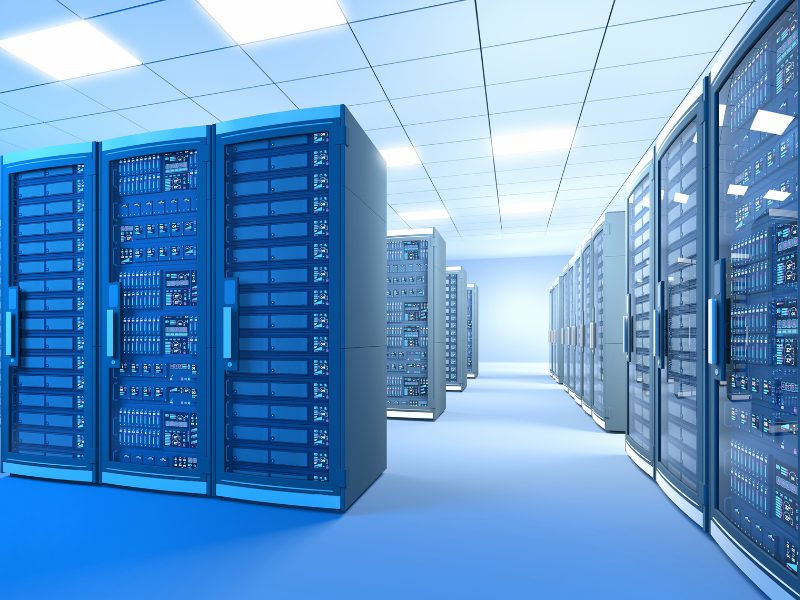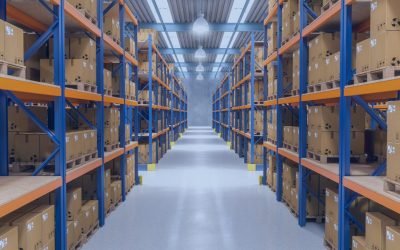The demand for high-performance components for data centers continues to grow steadily across the region.
Data centers are no longer hidden on the outskirts. Once considered secondary facilities, they are now strategic infrastructure competing for land, resources, and regulatory attention. These operations drive multi-billion-dollar investments and demand substantial volumes of energy and water.
The Global Data Center Map
As of March 2024, there were 11,800 operational data centers worldwide, according to Cloudscene. Nearly half are located in the United States, with key hubs in Northern Virginia, Silicon Valley, Dallas, and Chicago. In Europe, key locations include London, Frankfurt, Paris, and Amsterdam, although space and energy constraints are beginning to limit new developments.
In Asia, China accounts for over 400 data centers and is approaching the volume of those in Europe. Tokyo, Singapore, and Hong Kong also stand out as central nodes. In Oceania, Sydney has established itself as Australia’s primary hub. Russia, meanwhile, maintains a more limited network focused on local storage and digital sovereignty.
Latin America’s Surge
Growth across Latin America remains uneven, but Brazil has clearly taken the lead. São Paulo alone accounts for nearly 500 megawatts of installed capacity. Global players, including Equinix, Scala, and Digital Realty, are driving considerable investments. In that city alone, three projects worth $2.8 billion have been approved, with a projected energy consumption of over 350 megawatts.

Mexico has emerged as the region’s second-largest hub, fueled by nearshoring and the concentration of data center activity in Querétaro, which accounts for more than half of the country’s operations. Chile is also gaining ground, particularly in Santiago, where the cold climate and availability of renewable energy have attracted tech giants such as Google and Microsoft.
Although the region still lags behind North America and Europe, the pace of growth reflects a clear trend: more countries are actively competing to attract investment related to data centers and AI hardware.
AI Infrastructure and GPUs
Traditional data centers relied on CPUs, the standard processors designed for sequential computing tasks. However, the surge in artificial intelligence, deep learning, and large-scale data processing demands parallel execution. As a result, GPUs (Graphics Processing Units) have taken center stage.
GPUs enable the training of AI models with trillions of parameters in just weeks—or even days—a major shift from timelines that previously required months. The GPU market is projected to grow from $63.22 billion in 2024 to $592.18 billion by 2033, with an annual growth rate of 28.22%. Multiple forces, including rising demand for high-performance computing, the rapid adoption of machine learning, and continued investment from the gaming sector, fuel this growth.
“GPUs are high-value units, subject to dual-use classification and strict regulations. Shipping them across borders carries considerable risk if documentation is incomplete.”
GPUs have become a core component in the development of technology worldwide. Carolina Muller, VP of Business Development, explains it clearly: “The rise of artificial intelligence has triggered a global surge in GPU demand, with companies seeking faster delivery across different markets. The leading importers include the United States, China, Germany, Singapore, and South Korea, while the top exporters are Taiwan (TSMC), South Korea, the United States, Japan, and the Netherlands.”

“The challenge is that these units are high in value, subject to dual-use classification, and heavily regulated. Transporting them across borders carries significant risk if documentation is incomplete or if export regulations are not met. Customs delays can result in multimillion-dollar losses,” Muller adds.
Aerodoc as a Strategic Partner for Overcoming Customs Barriers
In this context, Aerodoc provides logistics solutions for companies importing GPUs and AI hardware into Latin America. Regulatory conditions in many countries across the region are intricate, creating obstacles for the growing demand for AI and data center hardware.
To address this, we operate as an Importer of Record (IOR) and offer Delivery Duty Paid (DDP) shipments, which cover duties and taxes, customs clearance, and door-to-door transport. We also provide specialized handling and White Glove deliveries, tailored to sensitive equipment such as GPUs, routers, servers, and other AI infrastructure.
Contact our team to learn more about our services.
Q&A
- What specific regulations impact the importation of GPUs and AI hardware in key Latin American markets? Regulations vary by country but often involve dual-use classification, import licensing, and complex customs procedures. Local compliance expertise is essential to avoid logistical disruptions.
- How can companies optimize delivery times for GPUs and AI hardware in data center projects? Leveraging Importer of Record (IOR) services and Delivery Duty Paid (DDP) shipments significantly reduces customs delays. Specialized handling and end-to-end logistics further enhance operational efficiency.
- What are the risks of importing GPUs without proper documentation? Incomplete or incorrect documentation can lead to customs holds, regulatory penalties, and multimillion-dollar losses. Full regulatory compliance is critical when shipping high-value AI hardware.
- Which Latin American countries offer favorable conditions for deploying AI hardware infrastructure? Brazil, Mexico, and Chile lead the region due to their strong data center investments, energy availability, and evolving regulatory frameworks, making them strategic hubs for AI infrastructure growth.




